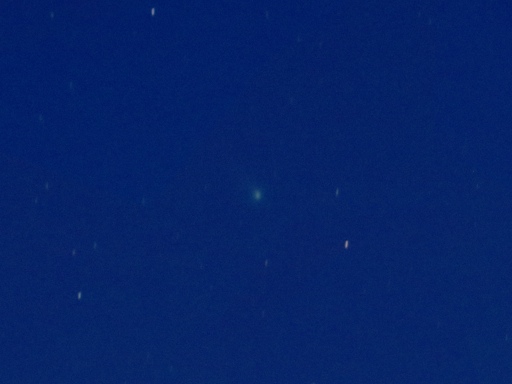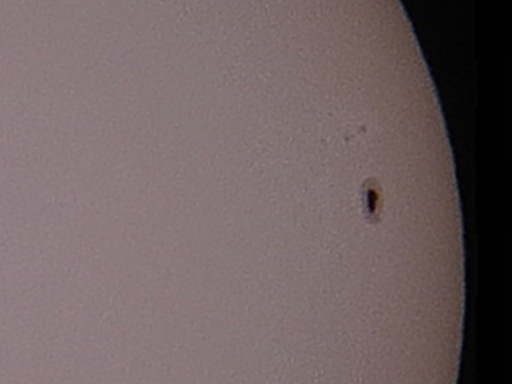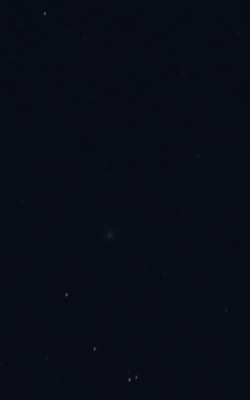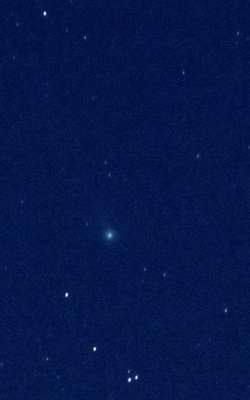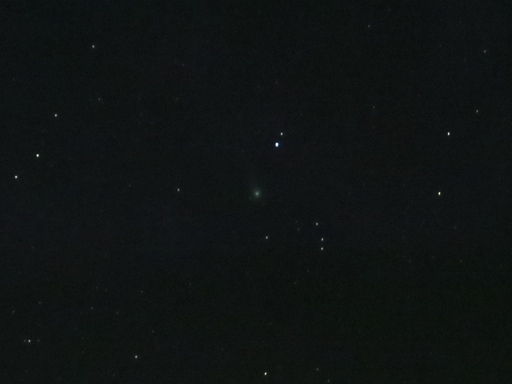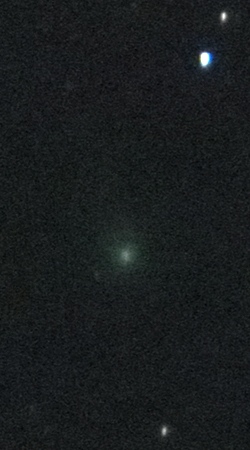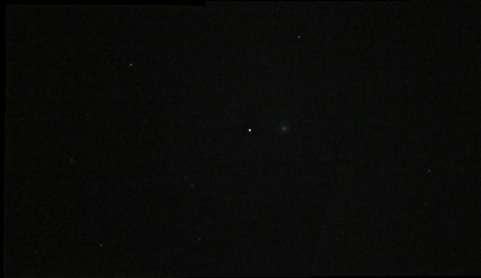Comet Lovejoy at longer exposure
Posted by Wesley onI've risked the streaking and went with lower ISO and longer exposure for today's comet C/2013 R1 Lovejoy photo. I've experimented with the micro-adjustment head (Longperng TP98AR) that finally arrived late last night after much delay to see if that would help reduce the streaking, but manual compensation proved to be quite difficult. So, after about an hour of fiddling I ended up taking simple long exposure photos just before the Sun came up.
As a note, I waited for another pass of Tiangong-1 half about twenty minutes later, but either the calculations were off or it was too dim (it was supposed to be around magnitude 1) against the brightening morning sky to be seen.
Settings: SX50 HS - 243mm - ISO 800 - 15s - f/5.6
Time: 2013-11-26 06:26 - 06:29 KST
Location: Suwon, Korea
7 photos stacked with RegiStax 6.1.0.8
